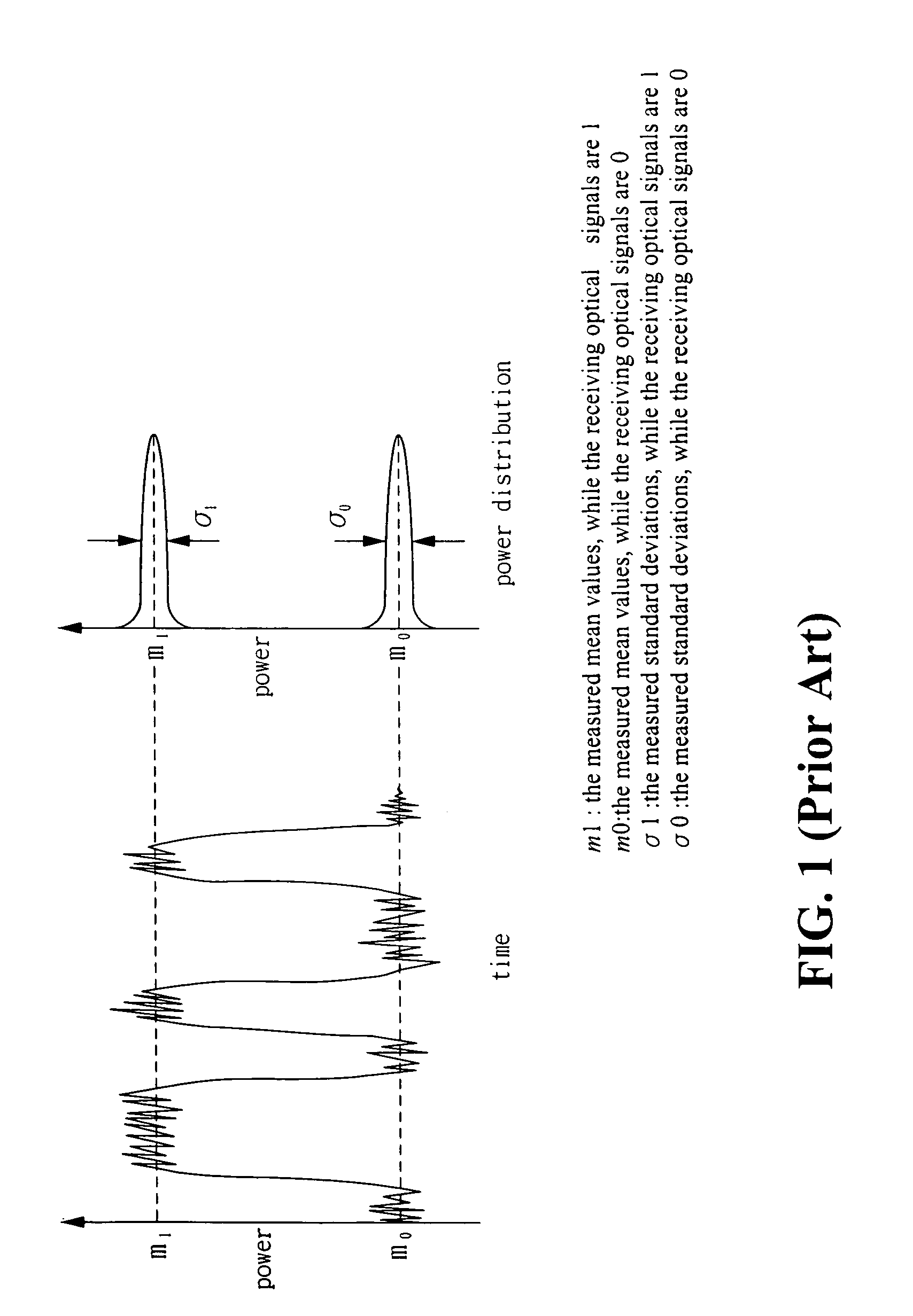Apparatus and method of non-sampling-based Q-factor measuring
- Summary
- Abstract
- Description
- Claims
- Application Information
AI Technical Summary
Benefits of technology
Problems solved by technology
Method used
Image
Examples
Embodiment Construction
[0034] As fore mentioned, the present invention provides a non-sampling-based Q-factor measuring apparatus and method, which utilizes an optic power conversion module to convert the power variation of input optical signals in time domain into the variation in a non-time domain and replaces the conventional signal sampling mechanism for the same Q-factor measurement.
[0035] According to the present invention, the output of the optic power conversion connects to a non-time variant analytical mechanism. Via the non-time variant analytical mechanism, the statistical mean and standard deviation of the corresponding power variation in the non-time variant domain for the input optical signals at levels of 1 / 0 is obtained, and the Q-factor for the input optical signals is also easily measured.
[0036] With the present invention, the optic power variation in time domain can be transformed into non-time variant quantities, such as optical wavelength, optical polarization, and different output ...
PUM
 Login to View More
Login to View More Abstract
Description
Claims
Application Information
 Login to View More
Login to View More - R&D
- Intellectual Property
- Life Sciences
- Materials
- Tech Scout
- Unparalleled Data Quality
- Higher Quality Content
- 60% Fewer Hallucinations
Browse by: Latest US Patents, China's latest patents, Technical Efficacy Thesaurus, Application Domain, Technology Topic, Popular Technical Reports.
© 2025 PatSnap. All rights reserved.Legal|Privacy policy|Modern Slavery Act Transparency Statement|Sitemap|About US| Contact US: help@patsnap.com



